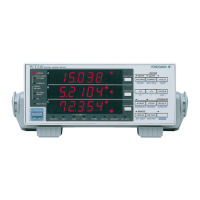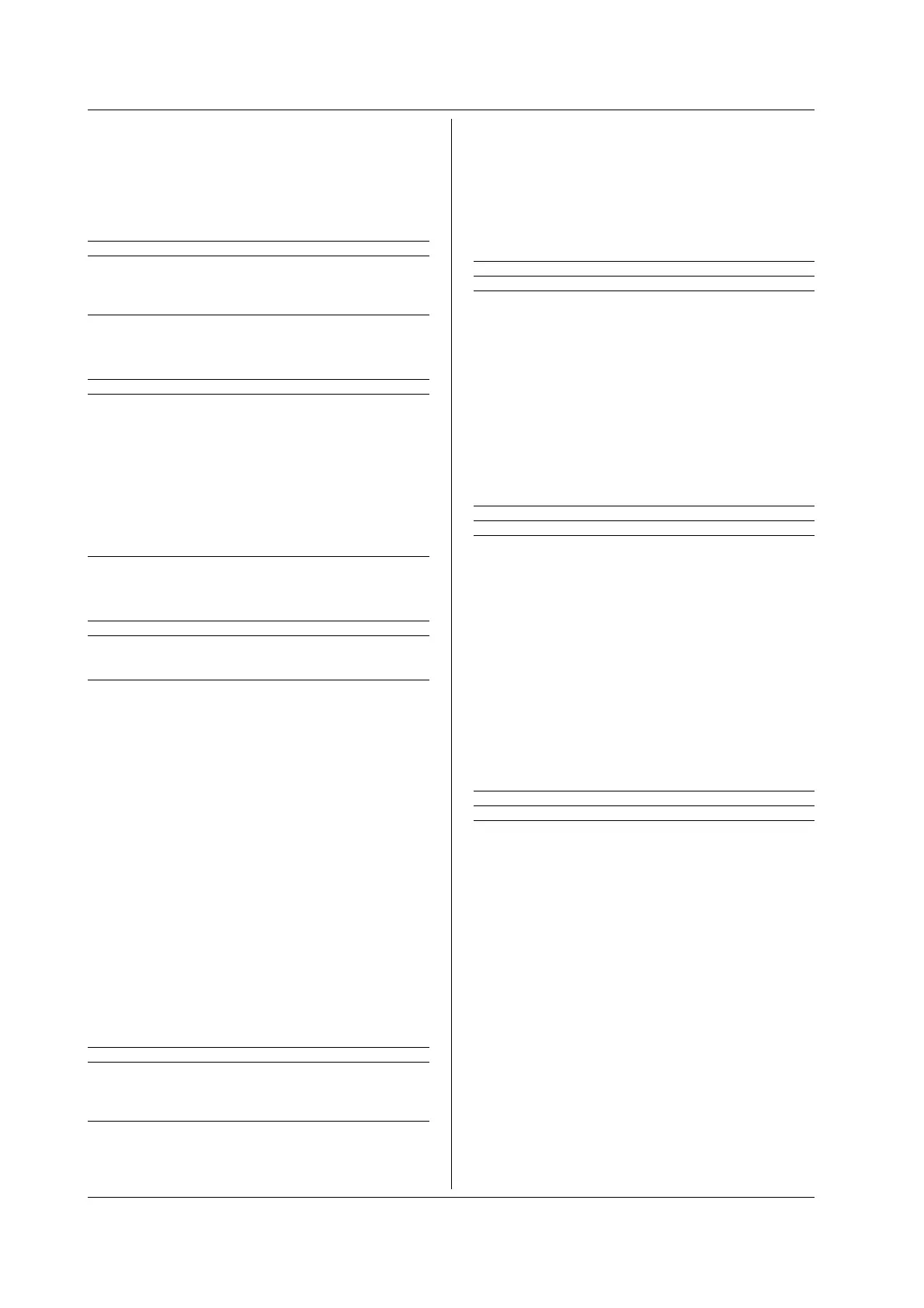14-8 IM 760401-01E
<Voltage>, <Current>, <Time>
<Voltage>, <Current>, and <Time> indicate decimal
values which have physical significance. <Multiplier>
or <Unit> can be attached to <NRf>. They can be
entered in any of the following forms.
Form Example
<NRf><Multiplier><Unit> 5MV
<NRf><Unit> 5E-3V
<NRf><Multiplier> 5M
<NRf> 5E-3
<Multiplier>
Multipliers which can be used are shown below.
Symbol Word Description
EX Exa 10
18
PE Peta 10
15
T Tera 10
12
G Giga 10
9
MA Mega 10
6
K Kilo 10
3
M Mili 10
-3
U Micro 10
-6
N Nano 10
-9
P Pico 10
-12
F Femto 10
-15
<Unit>
Units which can be used are shown below.
Symbol Word Description
V Volt Voltage
A Ampere Current
S Second Time
<Multiplier> and <Unit> are not case sensitive.
“U” is used to indicate “µ”.
“
MA” is used for Mega (M) to distinguish it from Mili.
However, when using “MA” for current, Mili-ampere will
be valid; therefore use “MAA” to assign Mega-ampere.
If both <Multiplier> and <Unit> are omitted, the default
unit will be used.
Response messages are always expressed in <NR3>
form. Neither <Multiplier> nor <Unit> is used,
therefore the default unit is used.
<Register>
<Register> indicates an integer, and can be expressed
in hexadecimal, octal or binary as well as as a decimal
number. <Register> is used when each bit of a value
has a particular meaning. <Register> is expressed in
one of the following forms.
Form Example
<NRf> 1
#H<Hexadecimal value made up of the digits 0 to 9, and A to F> #H0F
#Q<Octal value made up of the digits 0 to 7> #q777
#B<Binary value made up of the digits 0 and 1> #B001100
<Register> is not case sensitive.
Response messages are always expressed as <NR1>.
<Character Data>
<Character data> is a specified string of character data
(a mnemonic). It is mainly used to indicate options,
and is chosen from the character strings given in { }.
For interpretation rules, refer to “Header Interpretation
Rules” on page 14-6.
Form Example
{RMS|VMEan|DC} RMS
As with a header, the “COMMunicate:VERBose”
command can be used to return a response message
in its full form. Alternatively, the abbreviated form can
be used.
The “
COMMunicate:HEADer” command does not affect
<character data>.
<Boolean>
<Boolean> is data which indicates ON or OFF, and is
expressed in one of the following forms.
Form Example
{ON|OFF|<NRf>} ON OFF 1 0
When <Boolean> is expressed in <NRf> form, OFF is
selected if the rounded integer value is “0” and ON is
selected if the rounded integer is “Not 0”.
A response message is always “
1” if the value is ON
and “0” if it is OFF.
<Character String Data>
<Character string data> is not a specified character
string like <Character data>. It is an arbitrary
character string. A character string must be enclosed
in single quotation marks (') or double quotation marks
(").
Form Example
<Character string data> 'ABC' "IEEE488.2-1992"
If the character string enclosed in single quotation
marks contains a double quotation mark ("), it is
represented as (""). This rule also applies to double
quotation marks (").
The character string data of a response message is
always enclosed in double quotation marks (").
Because <Character string data> is an arbitrary
character string, if the last single quotation mark (') or
double quotation mark (") is missing, the instrument
may assume that the remaining program message
units are part of the <Character string data> and may
not detect the error.
14.2 Program Format

